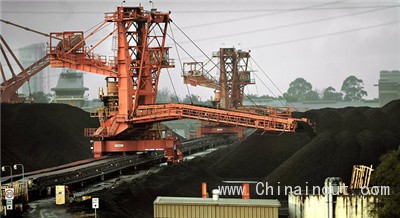中国政府规划机构——中国国家发展和改革委员会 (NDRC)规定,从2015年起,中国东部城市将禁止焚烧灰分高于16%或硫分高于1%的煤炭。中国东部城市人口众多、经济发达,是中国对抗空气污染的重点区域。
这一禁令实际上等于禁止中国从澳大利亚、非洲南部以及其他地区进口低质煤炭,因为华东沿海城市是进口煤炭的最大消费者。
该措施出台之际,中国正日益面临煤炭供大于求的局面,这为煤炭价格带来了下行压力,煤炭中心产区的地方经济也因此遭受打击。
北京IHS能源咨询机构的亚历克斯•惠特沃思表示:“由于治理污染、来自内地发电厂的远程输电以及大量新水电项目上线,今年中国东部对煤炭的需求正在见顶,这比人们预期得更快。”
新规定同时禁止开采或进口灰分高于40%或硫分高于3%的低质煤炭。此外,规定还对灰分高于20%或硫分高于1%的煤炭的运输作出限制。
瑞银(UBS)悉尼分行的丹尼尔•摩根(Daniel Morgan)表示,许多不符合新标准的澳大利亚出口商可能会通过冲洗或混合煤炭应对这一禁令。他补充说,“要实施这一禁令,中国必须建立大规模抽查与合规体制。” (更多进出口资讯请点击中国进出口网)

The world’s miners, already smarting from a steep dro in iron ore prices, are about to be hit by a Chinese ban on low-quality coal that comes into effect next year.
The National Development and Reform Commission, China’s state planner, has banned the burning of coal with ash content of more than 16 per cent or sulphur content of more than 1 per cent from 2015 in populous and prosperous eastern cities that are the focus of national efforts to fight air pollution.
That would in effect bar the import of lower-quality coal from Australia, southern Africa and elsewher, since the cities along the east coast are also the biggest consumers of imported coal.
The move comes as a glut of coal builds in China, placing pressure on prices and buffeting local economies in China’s coal heartlands.
“Eastern China coal demand is peaking this year, sooner than expected due to pollution curbs, long-distance transmission from inland power plants and a flood of new hydropower projects coming online,” said Alex Whitworth, of energy consultancy IHS in Beijing.
The new regulations ban the mining or import of low-grade coal with ash content above 40 per cent or sulphur content above 3 per cent. They restrict the transport of coal with ash content of more than 20 per cent or sulphur content of more than 1 per cent.
Daniel Morgan, analyst at UBS in Sydney, said many Australian exporters that did not meet the new specifications could respond by washing or blending coal. “This would require a massive sampling and compliance regime in China in order to be implemented,” he added.











